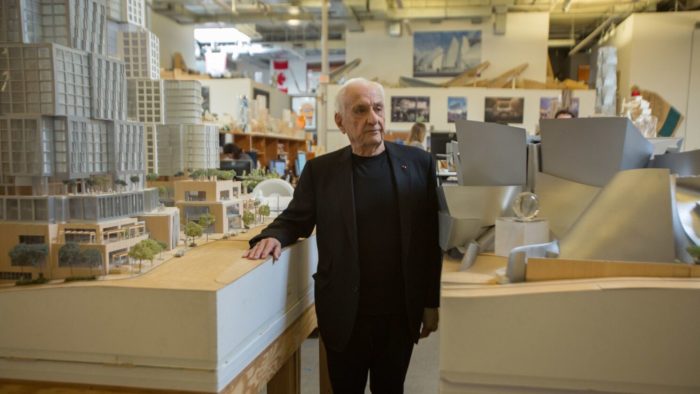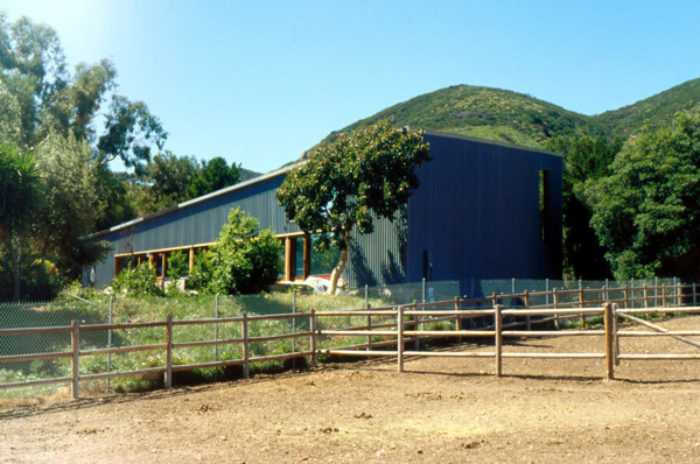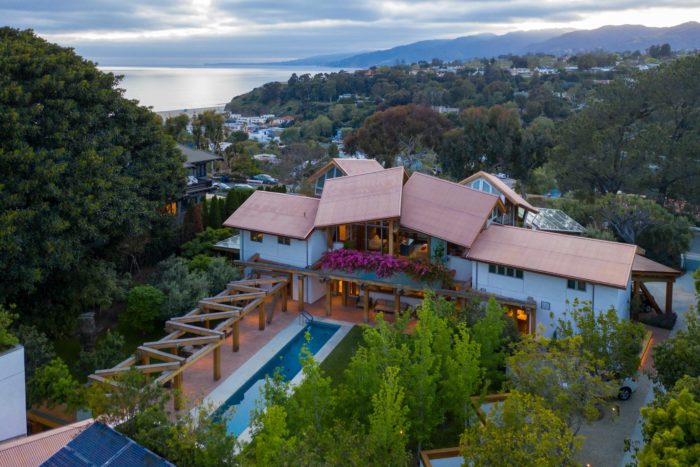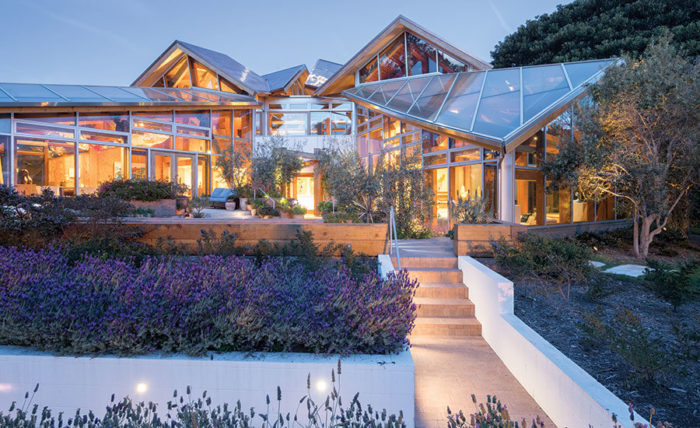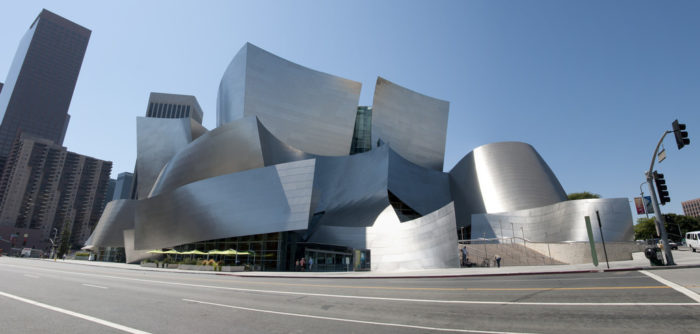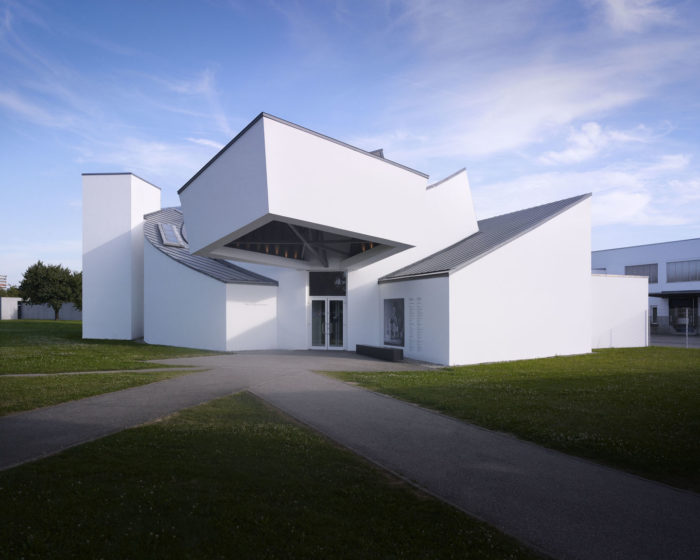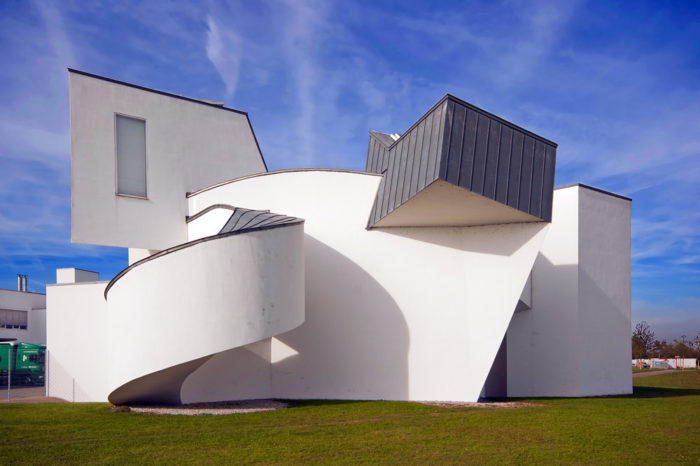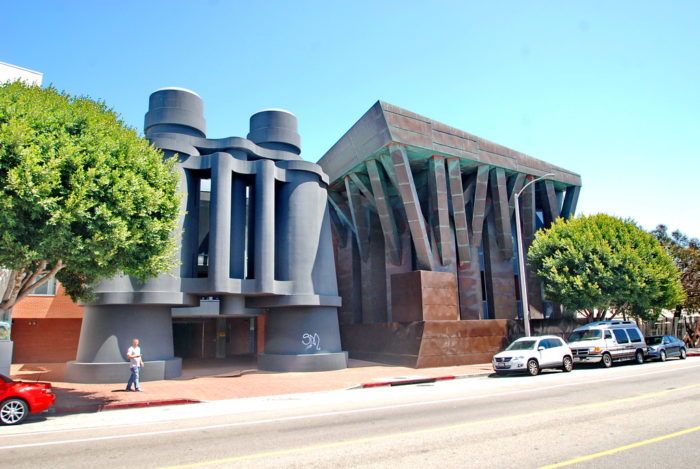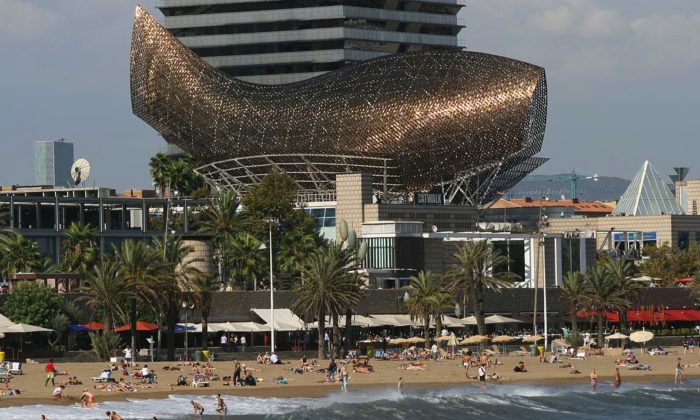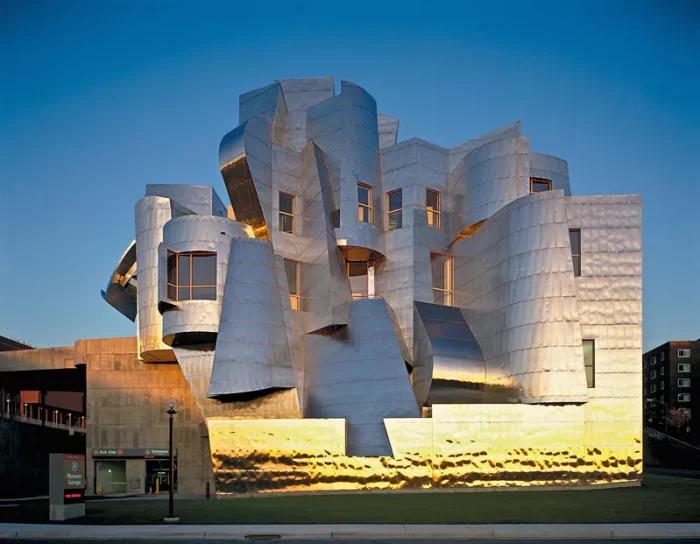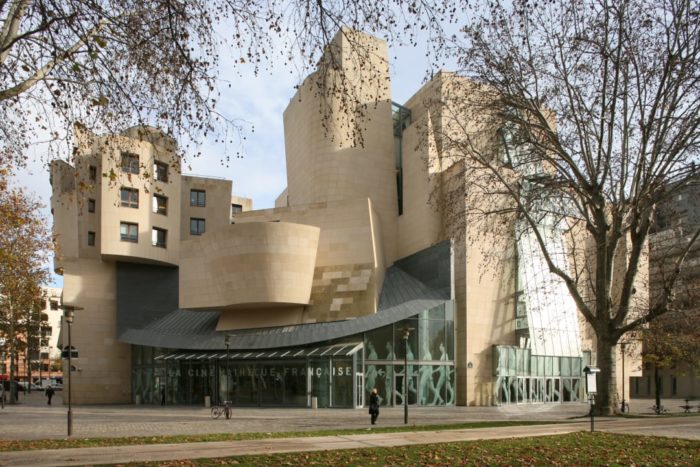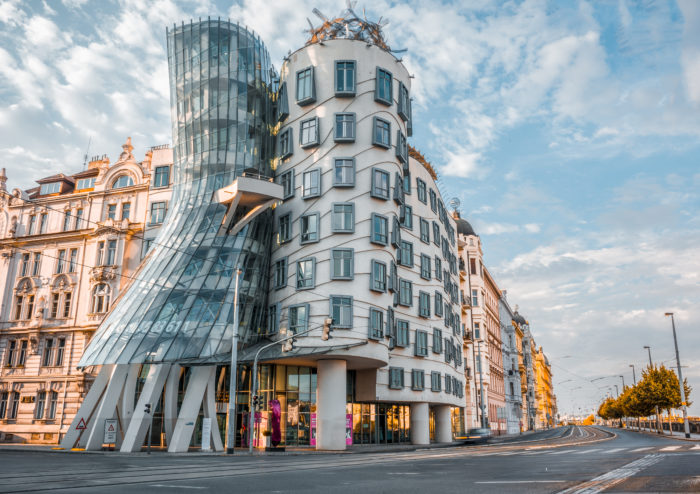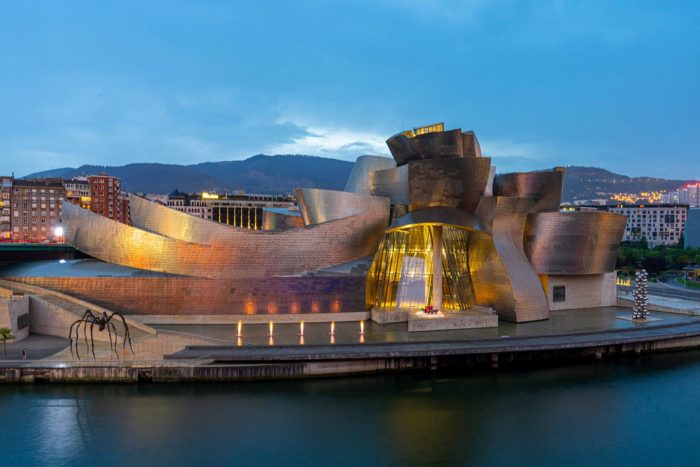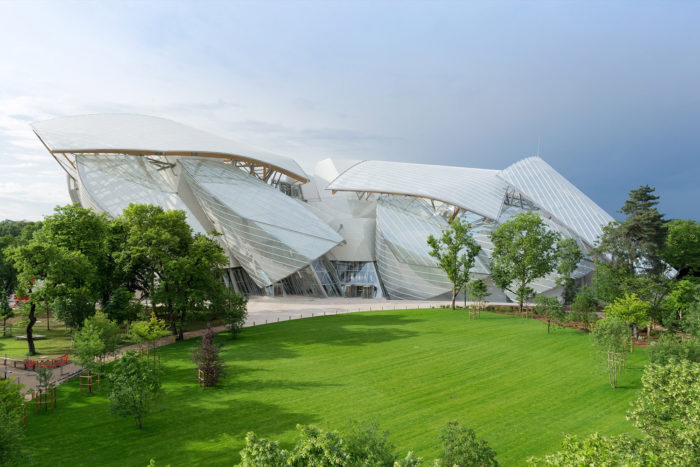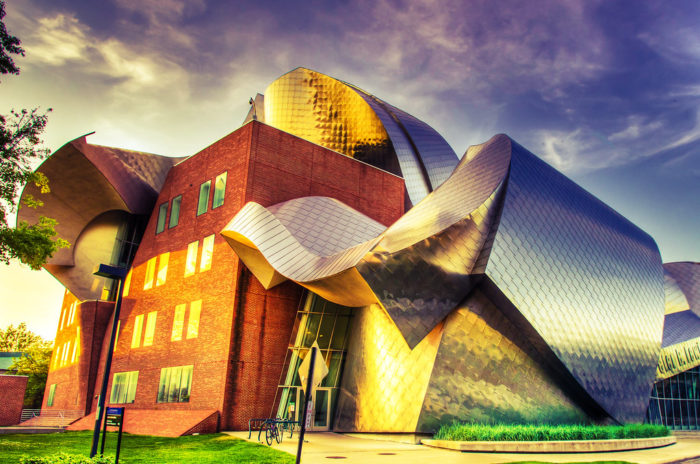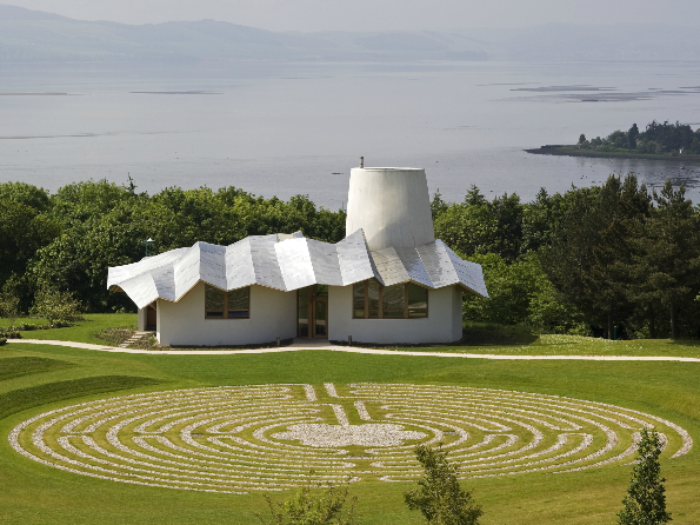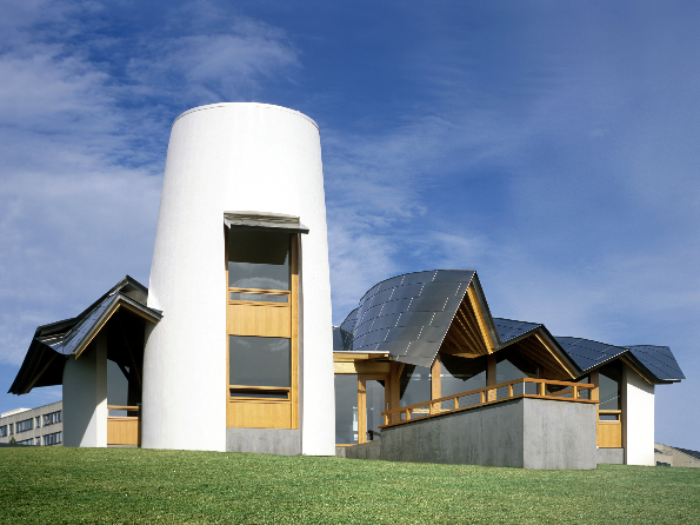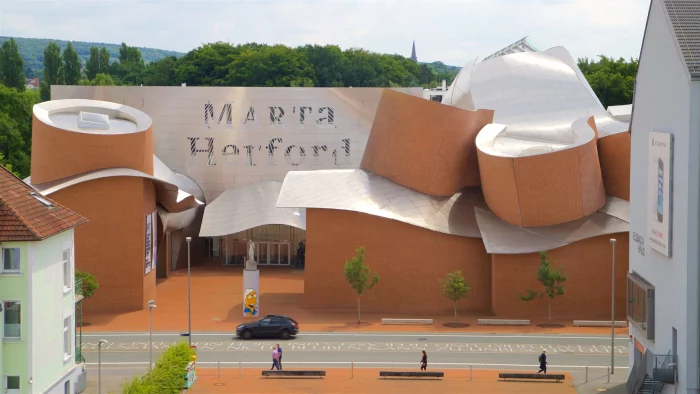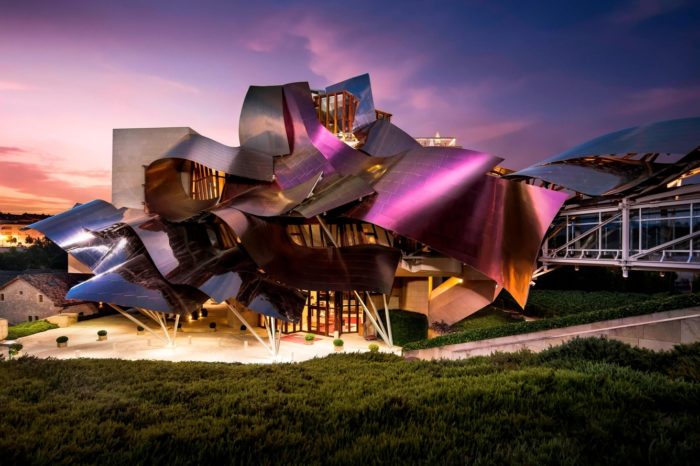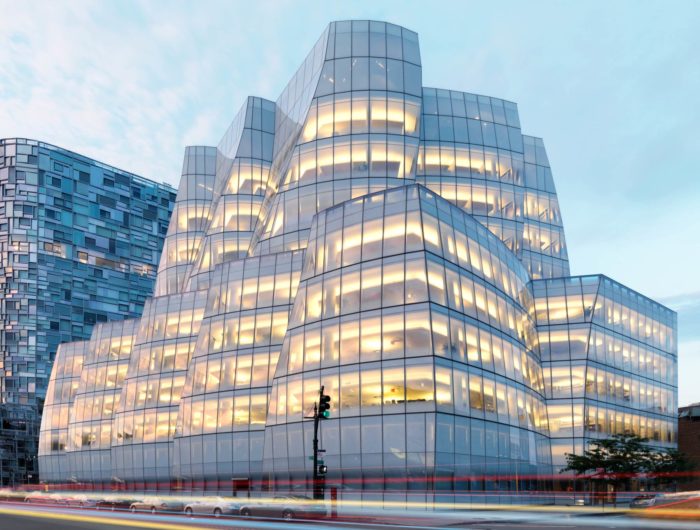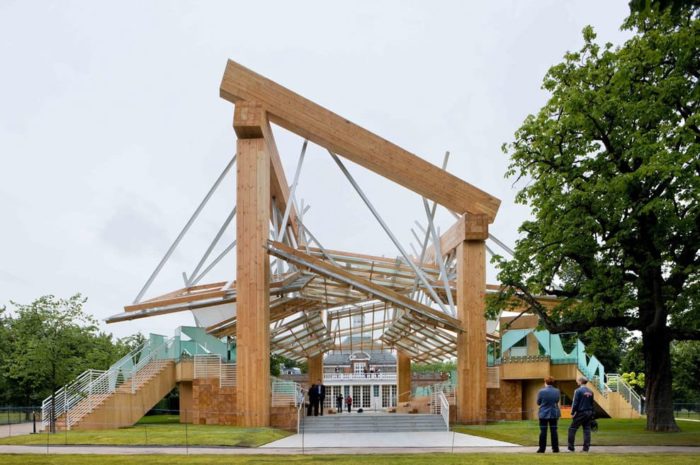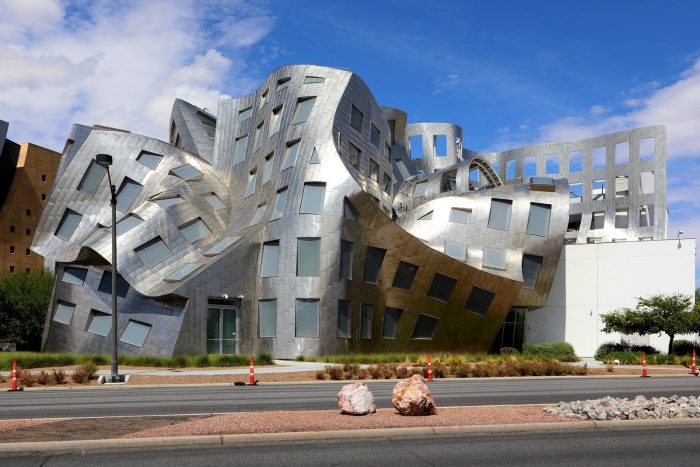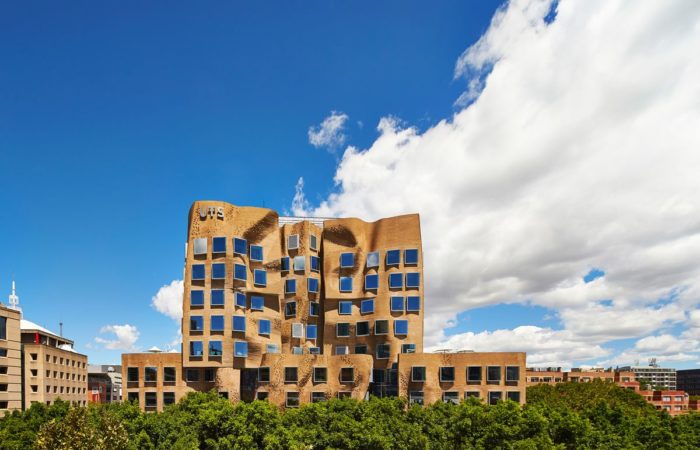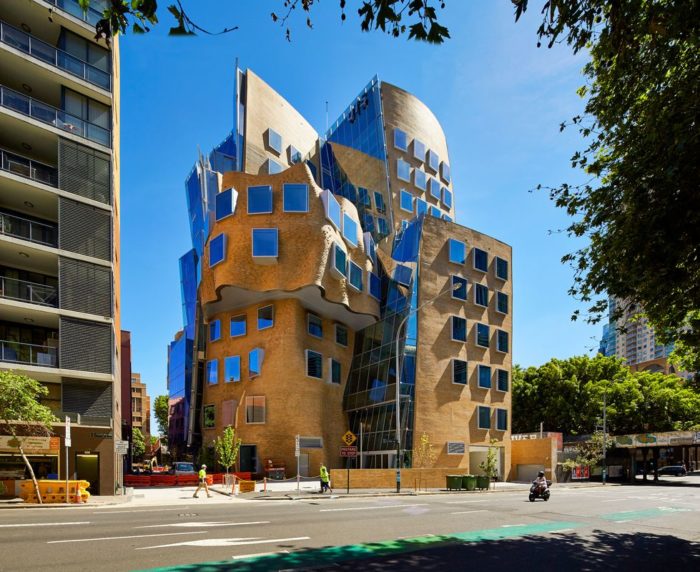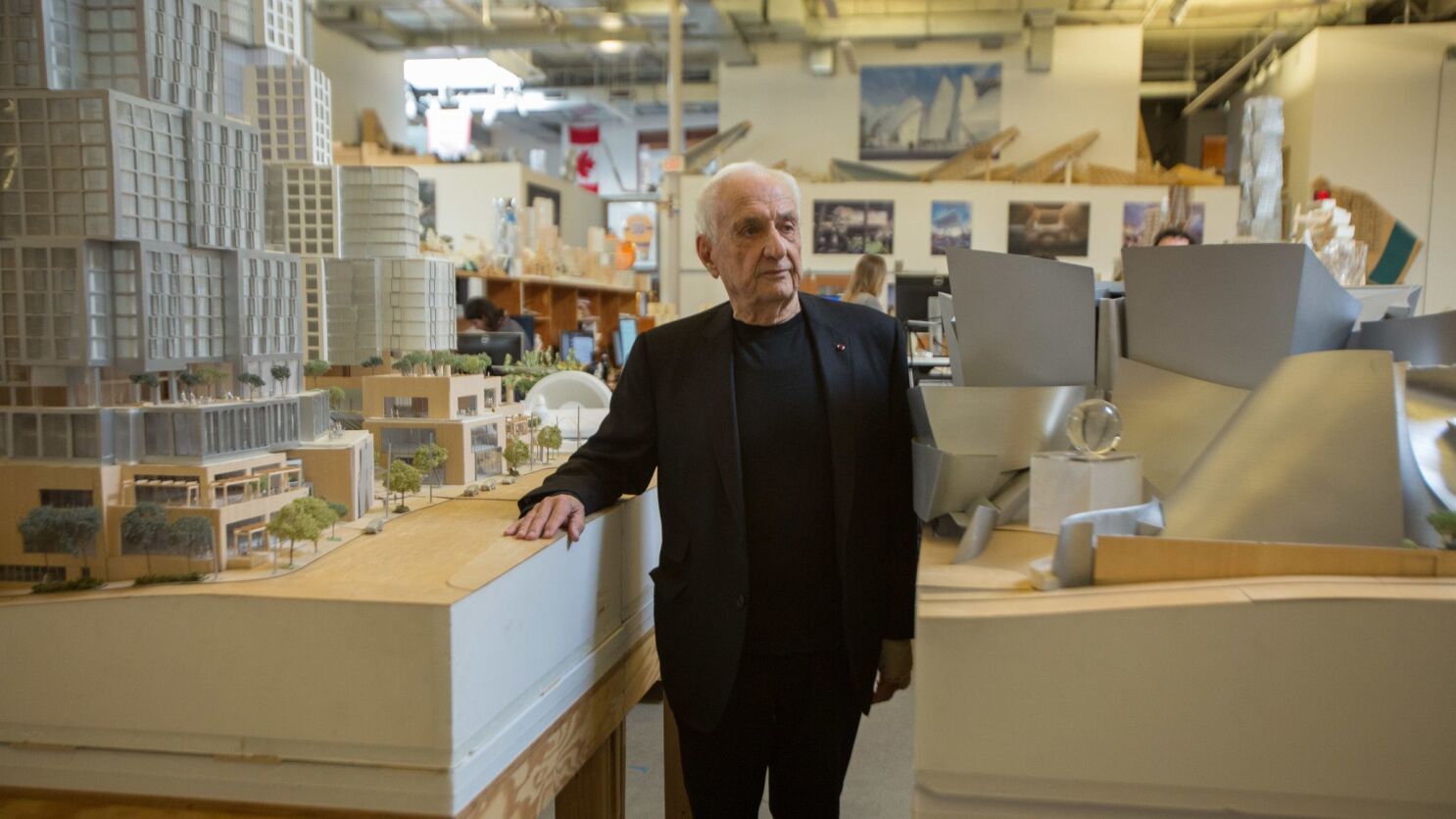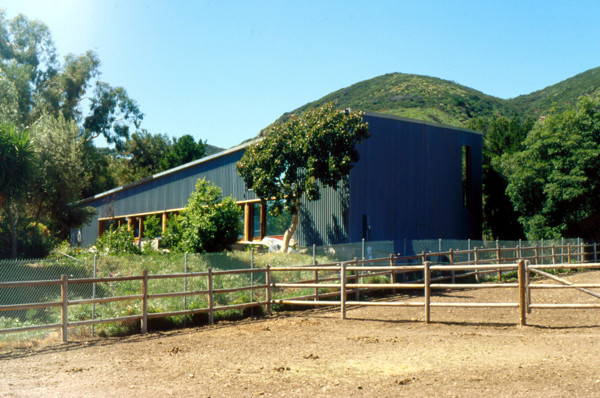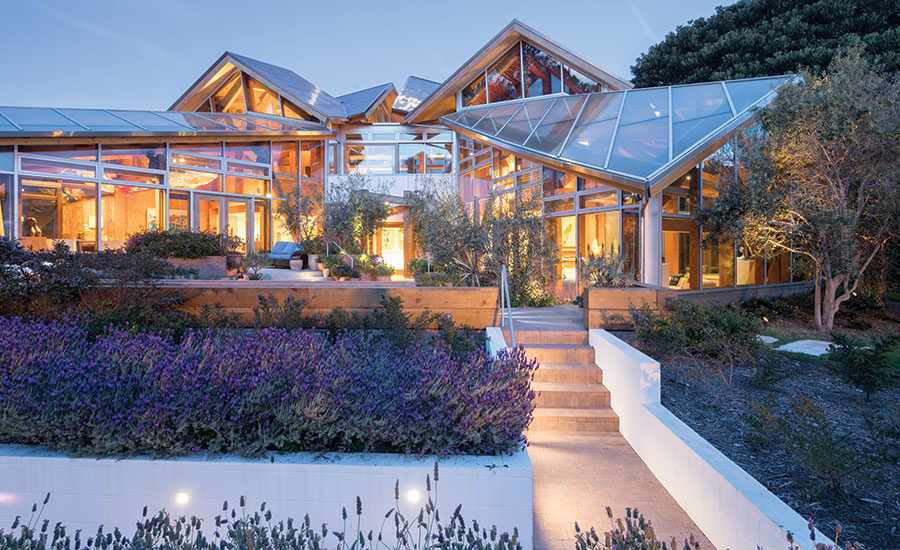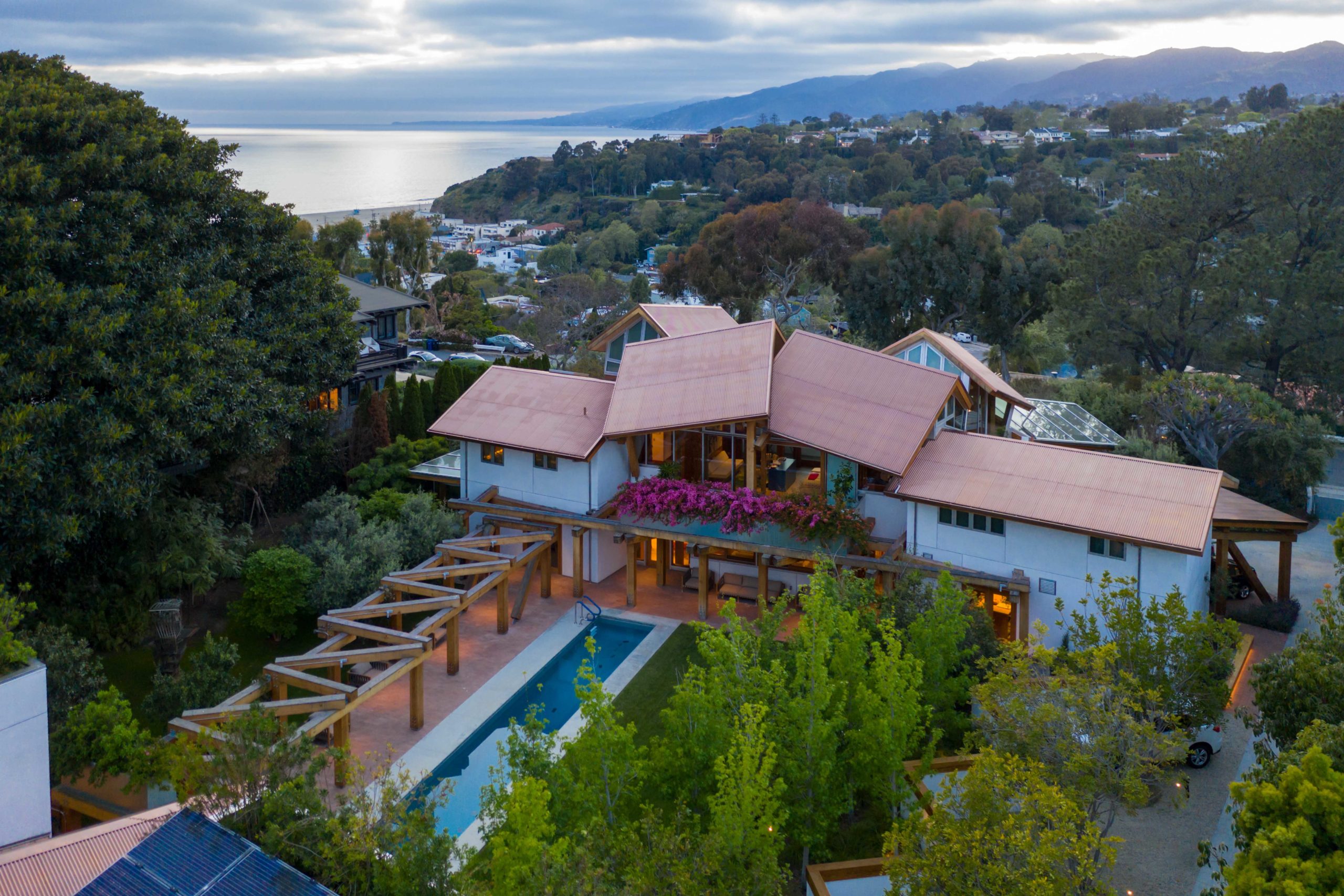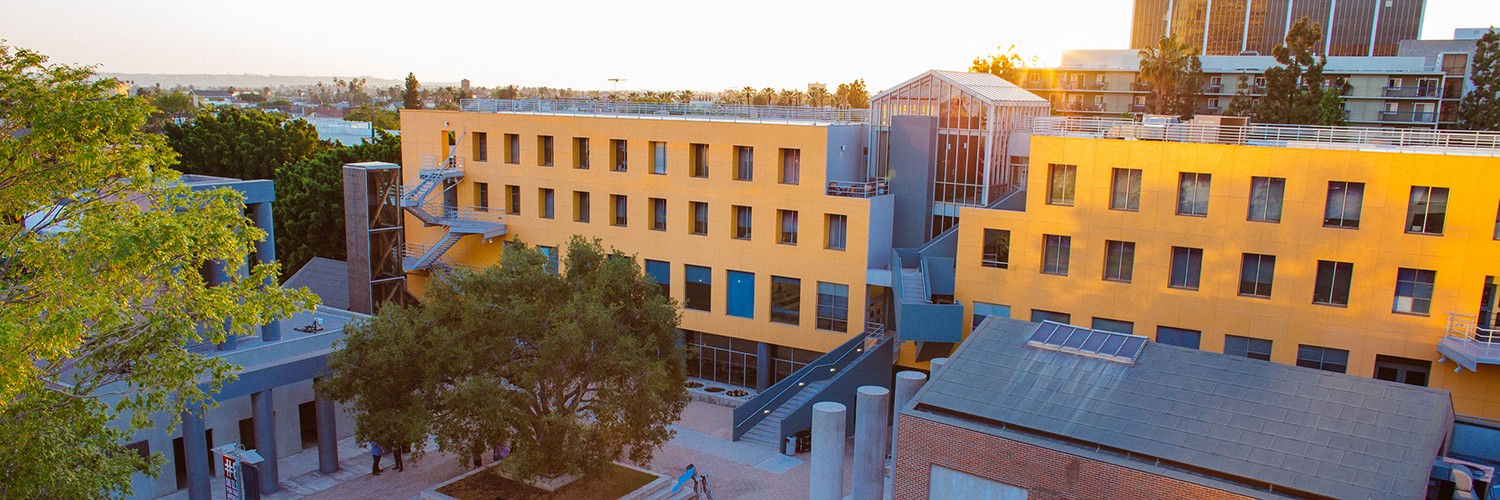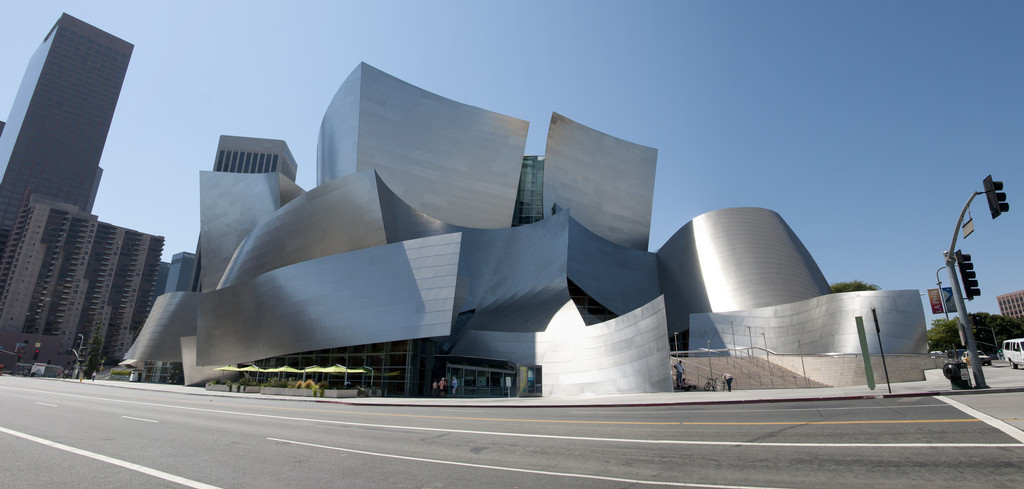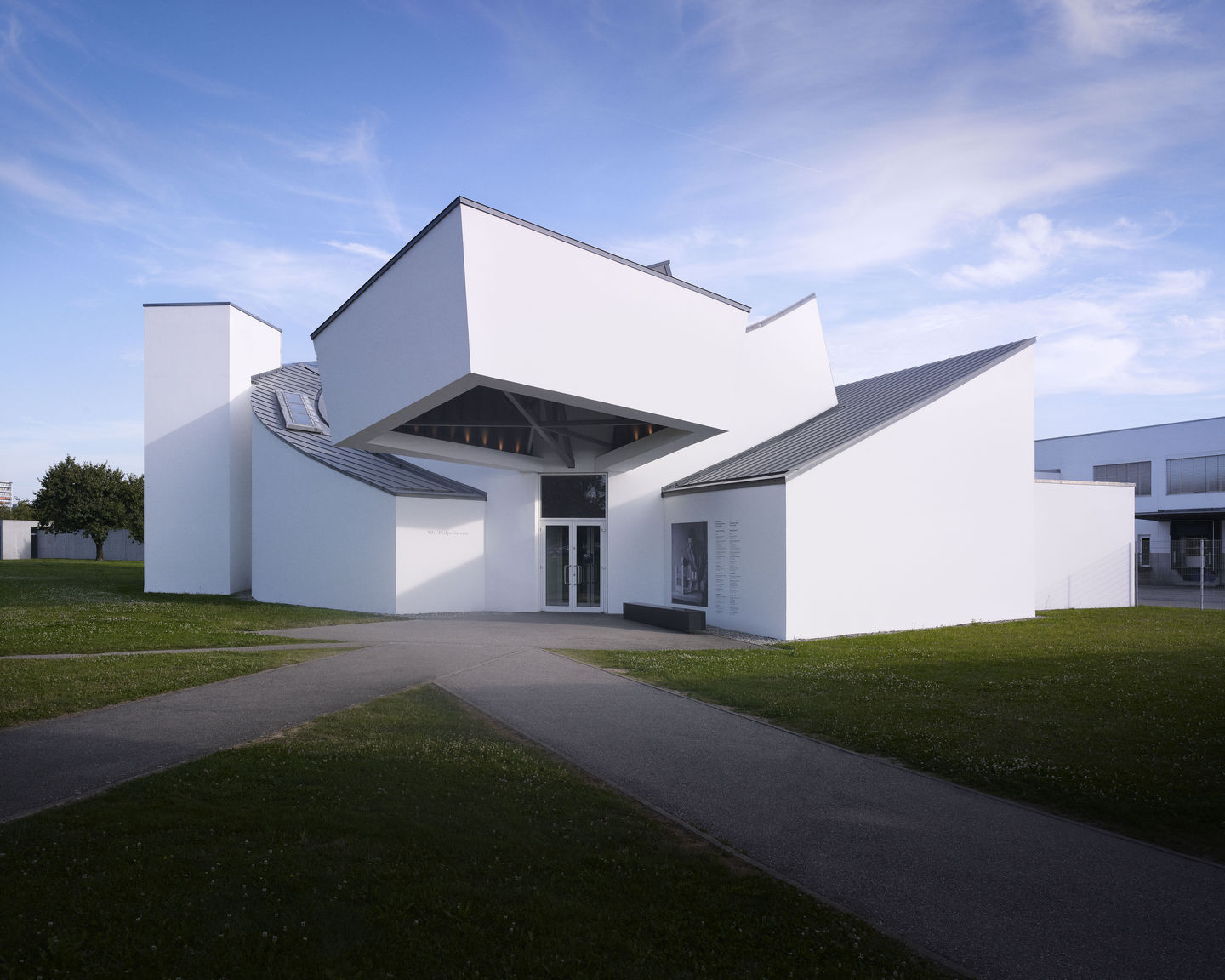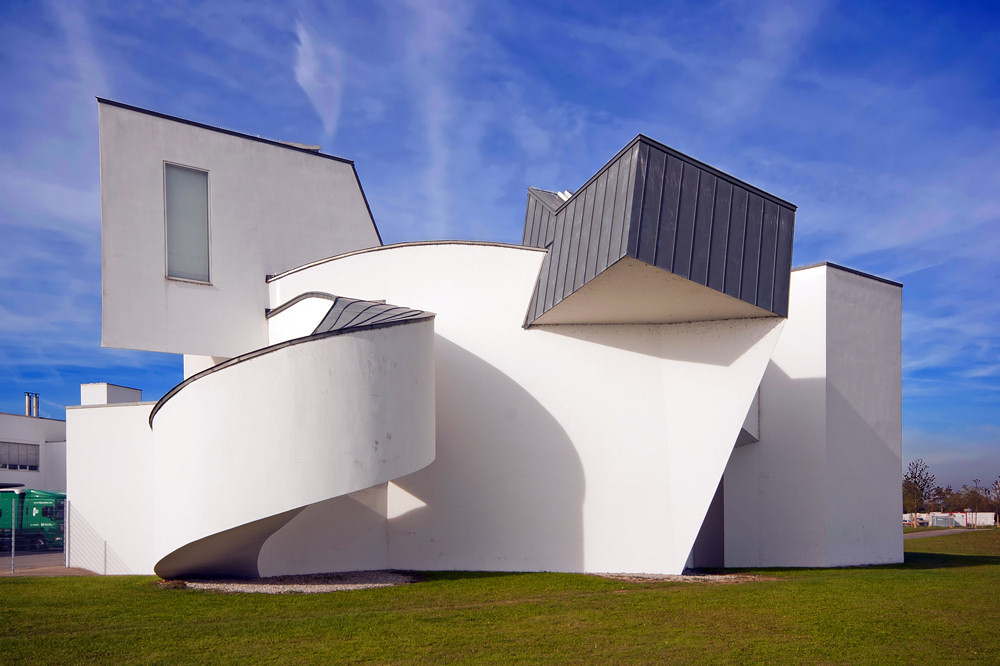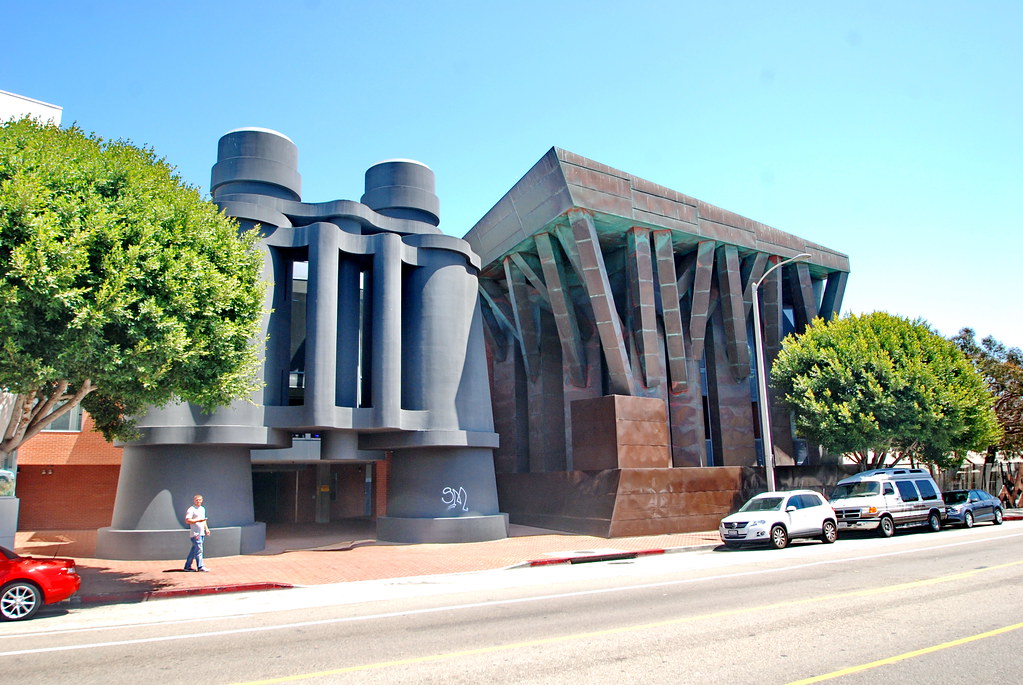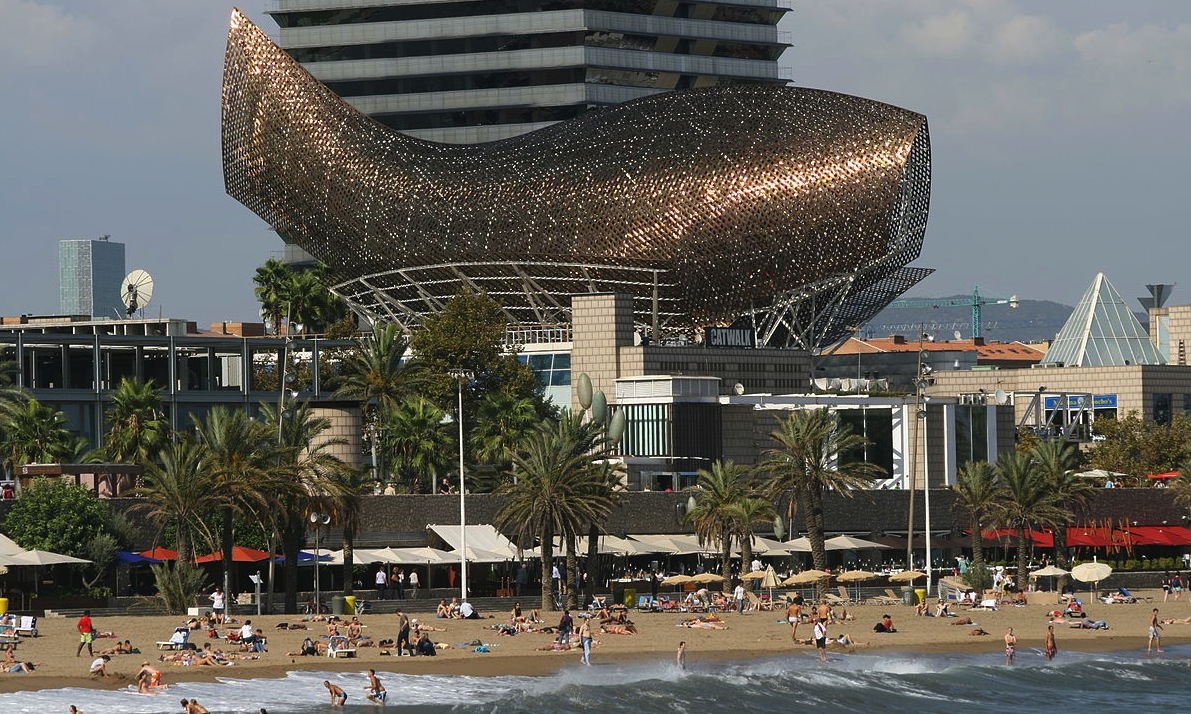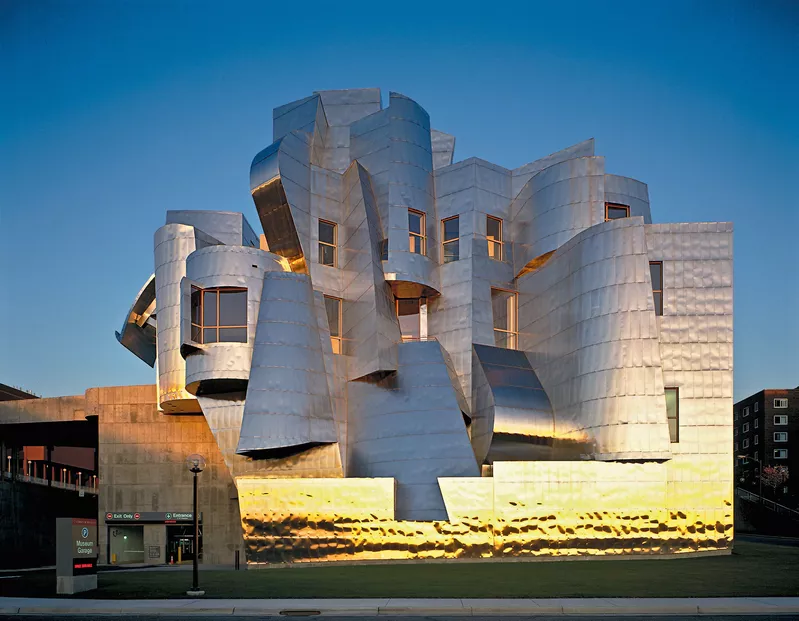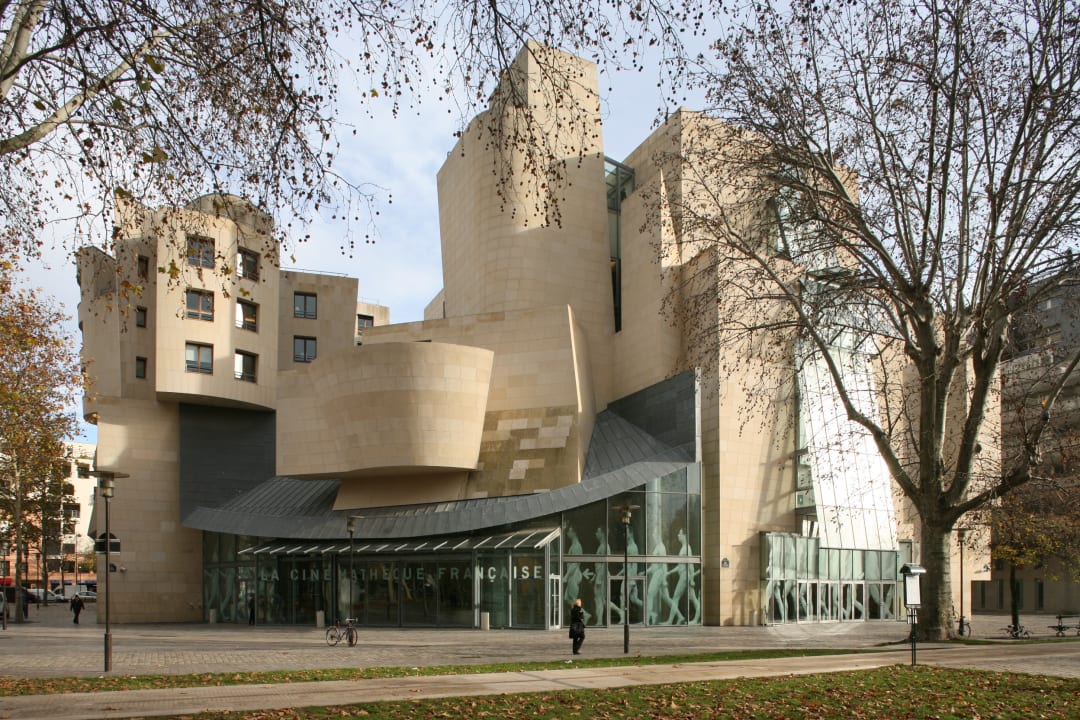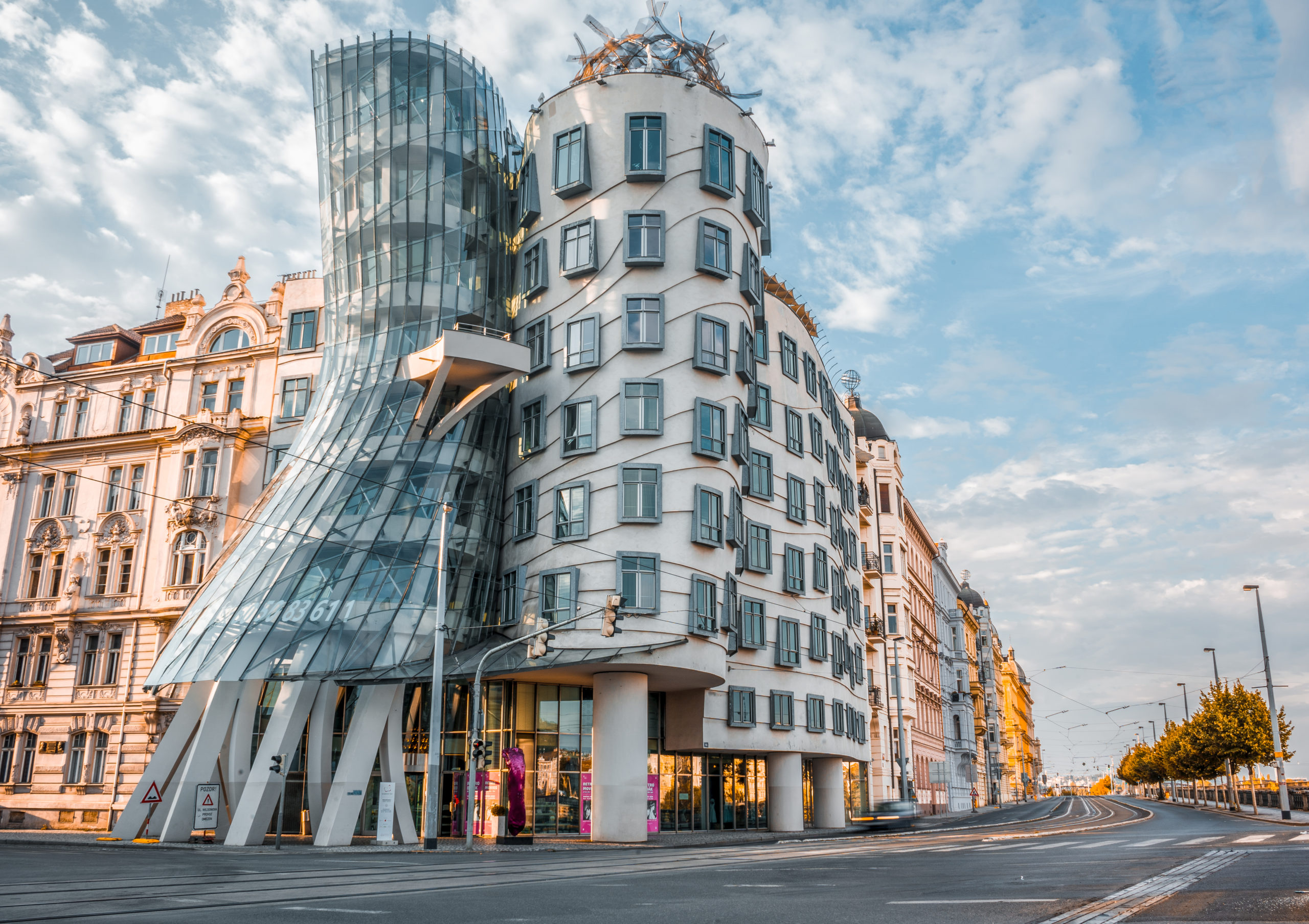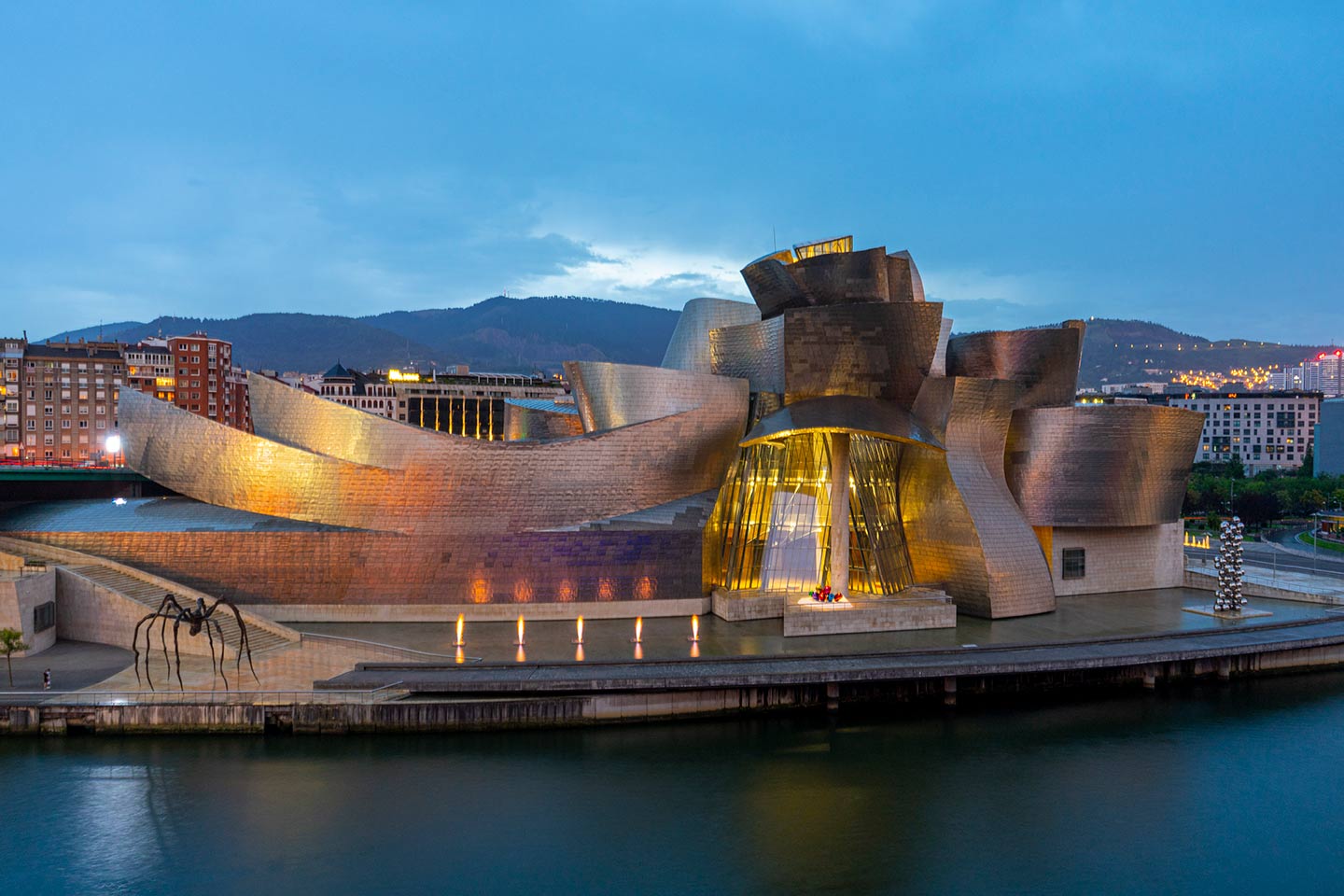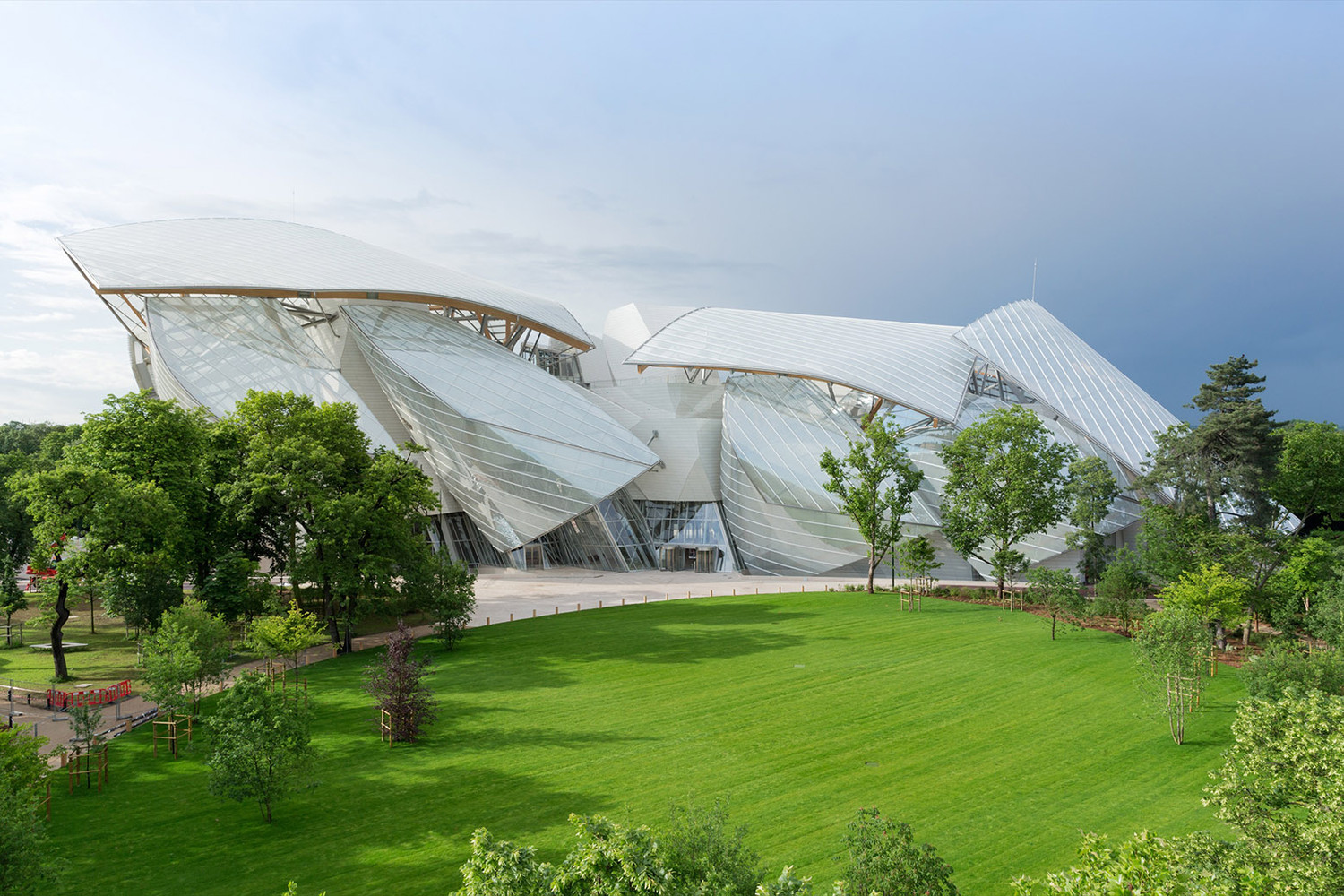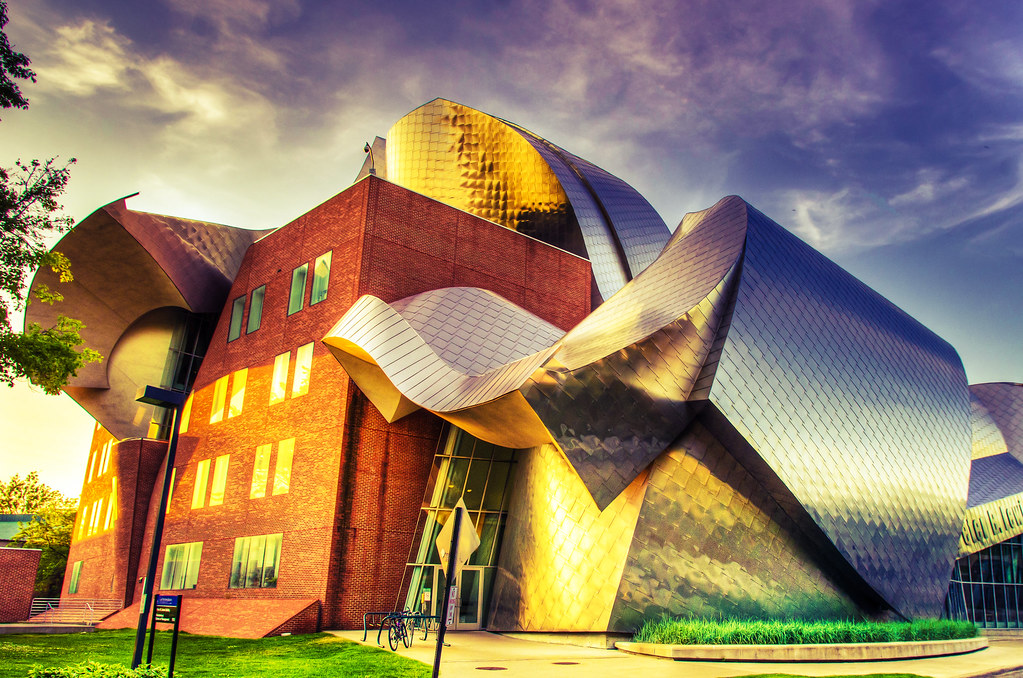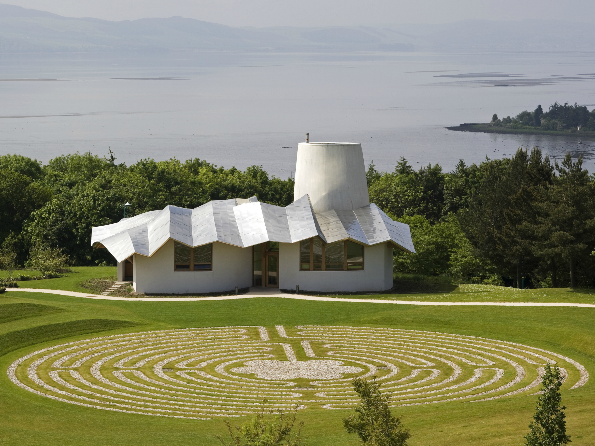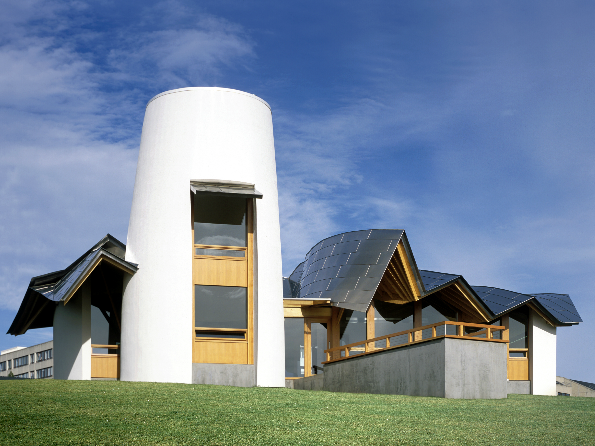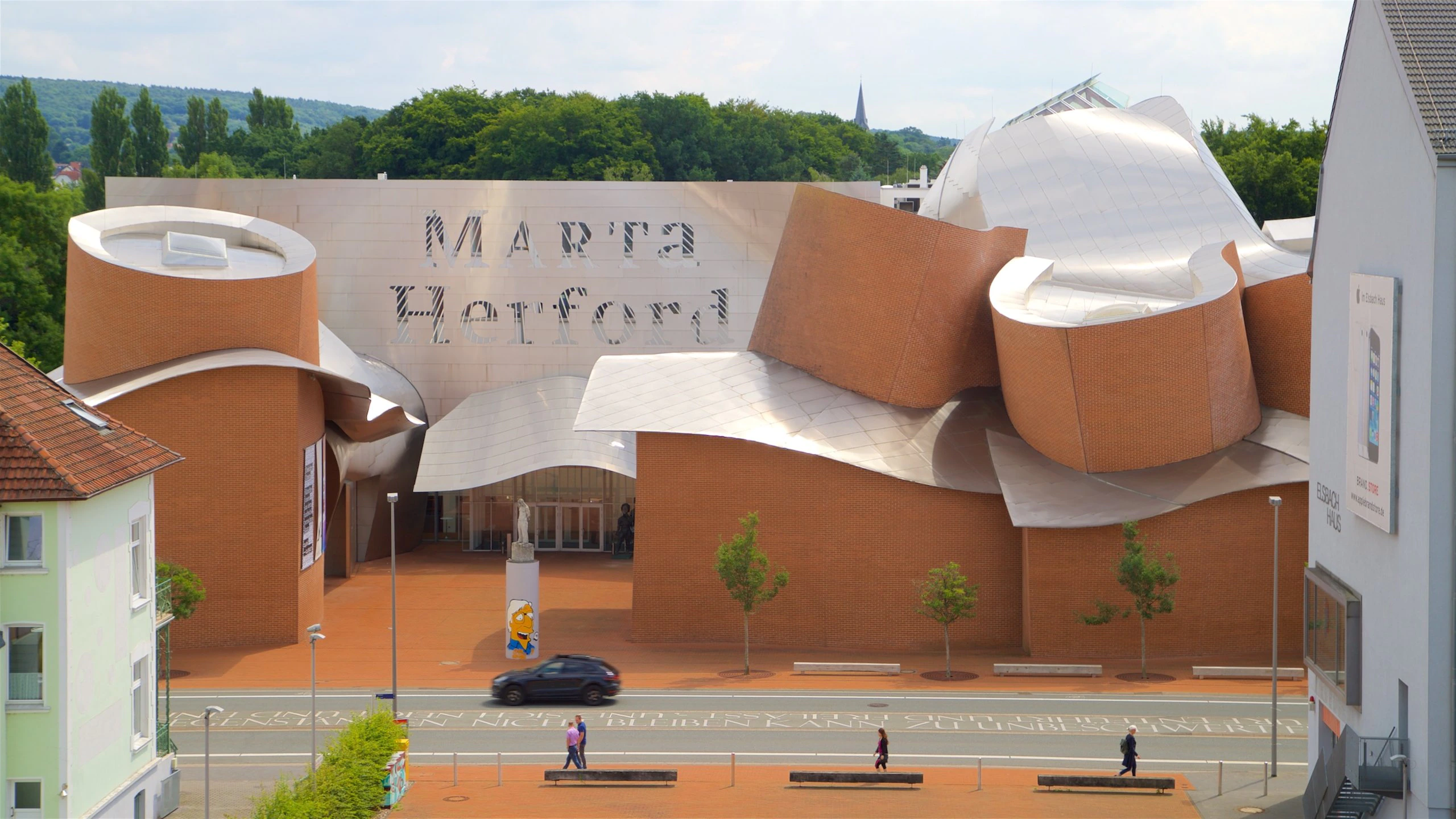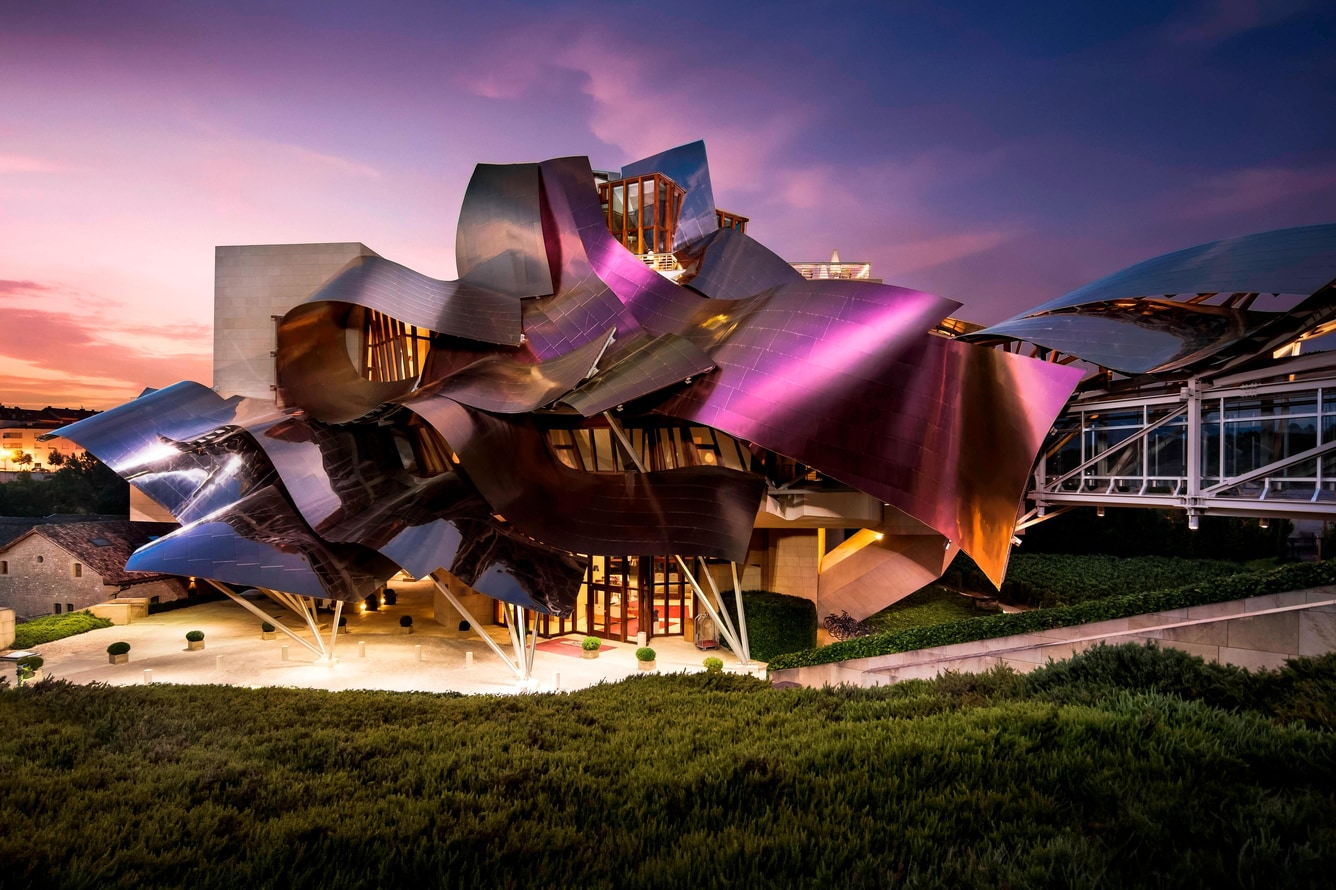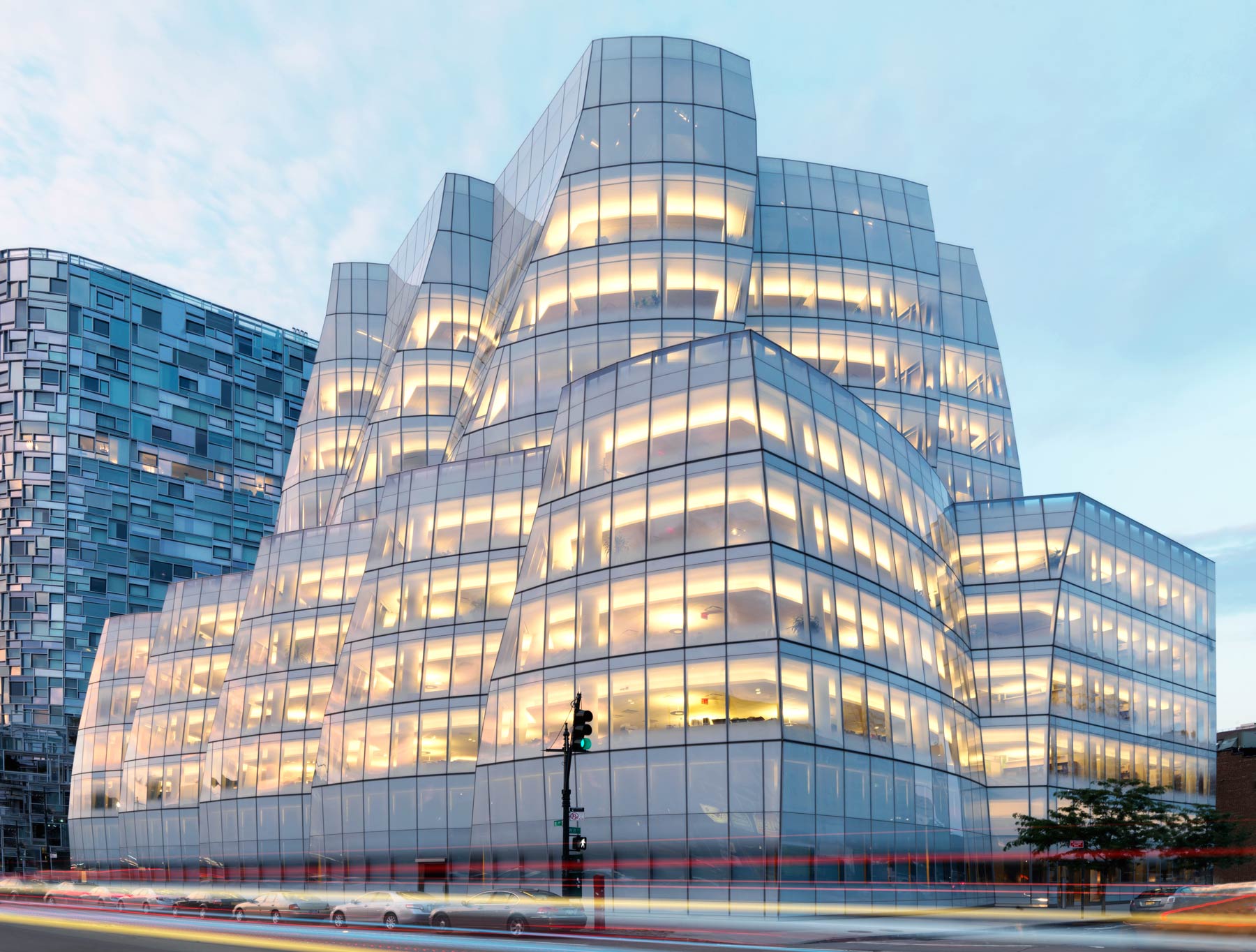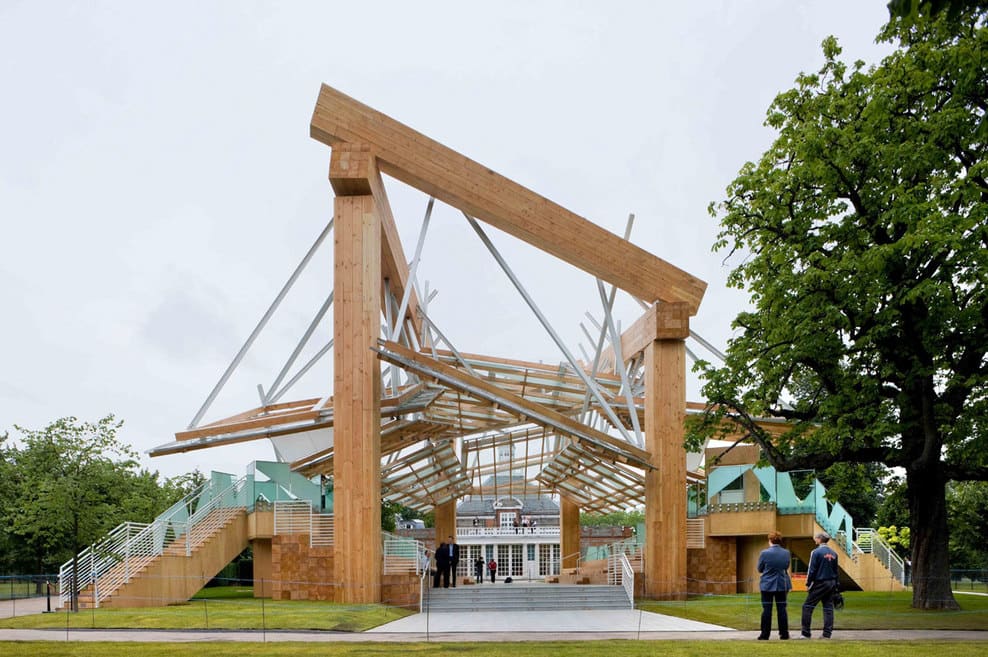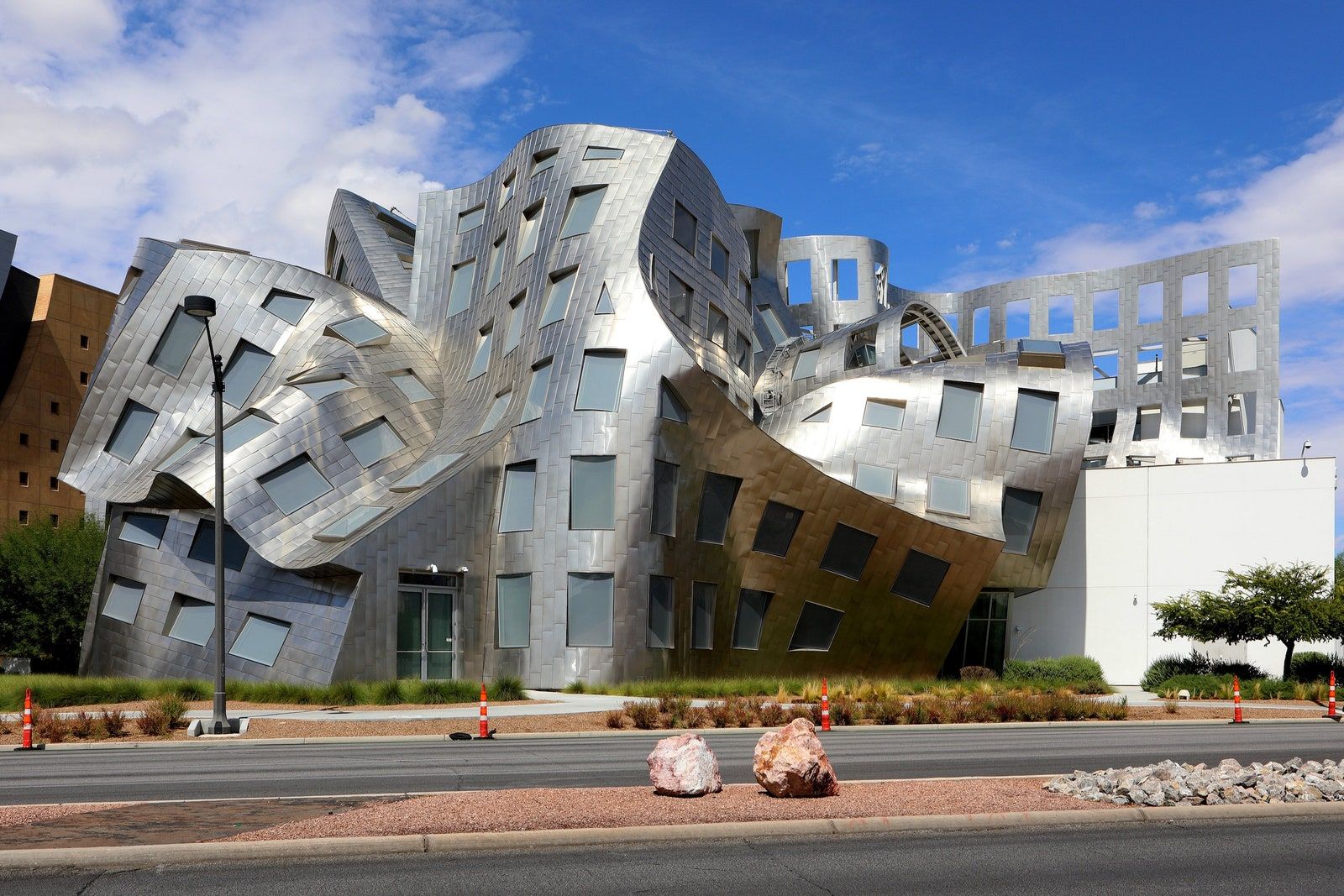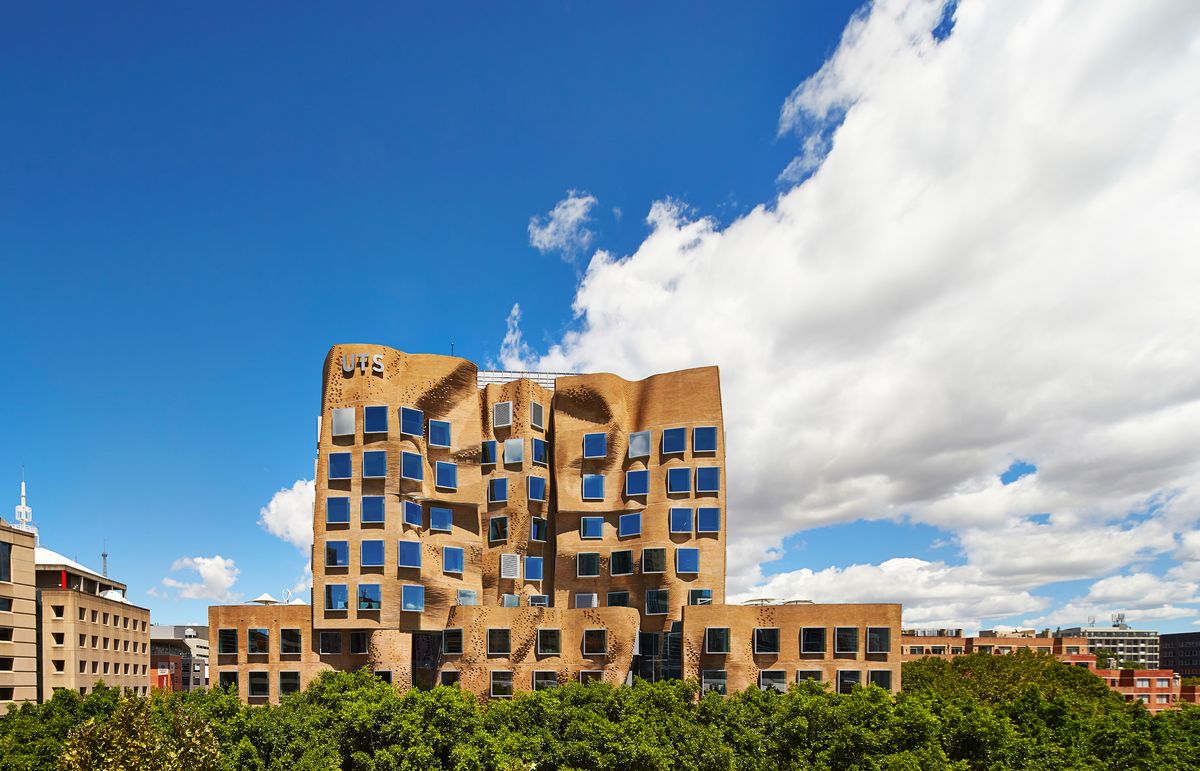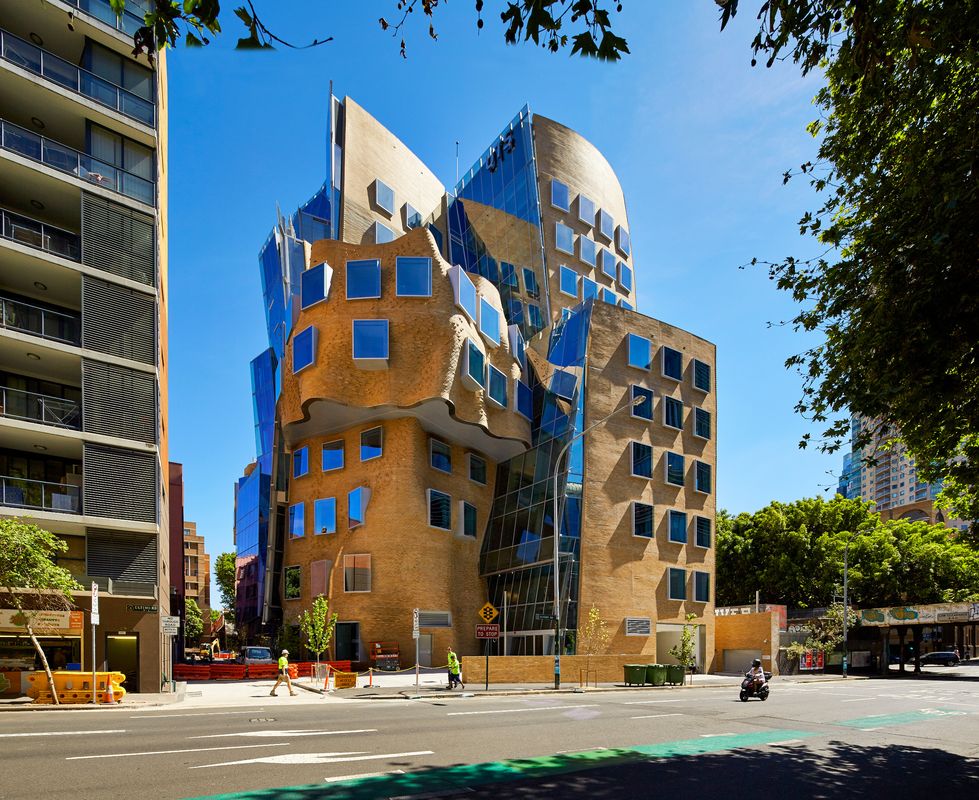Frank Gehry buildings have consistently been recognized for their bold, striking designs pushing traditional architecture’s boundaries, from his iconic Guggenheim Museum in Bilbao to his Santa Monica residence. Over the course of more than fifty years, Gehry has rewritten the meaning of architectural design. His work has proven to be highly influential on designers of the 20th and 21st Century. A man of whimsical imagination with seemingly no limits, Gehry has been called “the most important architect of our age” by Vanity Fair.
Also Read: 6 Houses Designed by Famous Architects to be Their Family Homes.
1) Davis Studio and Residence, Malibu, California, 1968
In 1968, just six years after establishing his architectural office in Los Angeles, Frank Gehry finished this dwelling/workspace residence in Malibu for artist Ron Davis. Even while the Davis house wasn’t Gehry’s first assignment, the sloping roof that gives a trapezoidal shape the appearance of wrenching forward is a hallmark of his style. Actor Patrick Dempsey and his family currently reside there.
2) Gehry House, Santa Monica, California, 1978
In 1978, Gehry’s Santa Monica home, which he envisioned accommodating him and his family, was built, marking his first profound encounter with recognition. Using an existing bungalow as a base, the concept added angular forms covered in a mishmash of common suburban materials, including plywood and chain link. The house quickly garnered praise and criticism for its bold, sculptural statement. The American Institute of Architects honored it with its 25th Anniversary Award in 2012.
3) Loyola Law School, Los Angeles, California, 1978
Gehry’s career in institutional design began with an initiative for an expansion of Loyola Law School in 1978. He envisioned the downtown Los Angeles location for Loyola as a neotraditional campus with various buildings in varying architectural styles. Early planning allowed for a phased campus extension to meet the institution’s needs as it matured. The design was ultimately finished in 2003.
4) Walt Disney Concert Hall, Los Angeles, California, 1988
The Walt Disney Concert Hall, which Gehry designed, fits in beautifully with the surrounding Los Angeles architecture. Located on top of Bunker Hill, this venue is remarkably welcoming due to the lack of luxury suites and gallery boxes. Even ten years after its inception, it continues to be the most desirable location in town.
5) Vitra Design Museum, Weil am Rhein, Germany, 1989
Vitra, a furniture maker, has been commissioning young architects to design structures for its site in Weil am Rhein since the 1980s. One of these is the 1989-founded Vitra Design Museum by Gehry. Gehry stacked basic geometric shapes against a cube-shaped volume for the 8,000 square foot space, tying it all together with white plaster walls and a zinc roof.
6) Chiat/Day Complex, Venice, California, 1991
Designed by Gehry in collaboration with artists Claes Oldenburg and Coosje van Bruggen, the massive couple of telescopes displayed at the entryway to a parking garage have earned the structure in Venice, California, its nickname, the Binoculars Building. A ship’s prow and tree trunk-shaped buildings now greet 500 Google employees daily, with the sculpture as a centerpiece.
7) Olympic Fish Pavilion, Barcelona, Spain, 1992
Fish have always held a particular fascination for Frank Gehry. He reflects on the architectural grace of swimming carp in a Japanese pool: “I enjoyed observing the beauty of carp swimming in the pool and thought about how delicate and attractive they were.” His Olympic plan for Barcelona is illustrative of this point. The Fish, located on the shore, is a well-known city symbol.
8) Weisman Art Museum, Minneapolis, Minnesota, 1993
The Weisman Art Museum found on the University of Minnesota campus, opened in 1993. Its western elevation protrudes above the riverbanks with its steel-clad spires and bays. In 2011, builders wrapped up work on a new wing that Gehry had planned.
9) Cinémathèque Française, Paris, France, 1994
The American Centre in Paris vacated this building, making it one of the Frank Gehry buildings list’s more subdued listings. Gehry eschewed his usual spectacular flair and went for a more understated design to show his appreciation for the old Parisian building surrounding it.
10) Dancing House, Prague, Czech Republic, 1996
After receiving negative reviews upon its initial release due to its perceived incompatibility with the city’s preexisting baroque and gothic architecture, the Dancing House has become one of the city’s most well-known icons. Because of its deconstructivist form, which recalls that of the two iconic Hollywood dancers, Ginger and Rodgers were its initial namesakes.
11) Guggenheim Bilbao, Spain, 1997
The Guggenheim Museum Bilbao is arguably the most well-known structure of the past 20 years and is often regarded as the greatest of the Frank Gehry Buildings. The Museum is a masterpiece of bold arrangement and innovative design, creating an enticing setting for the art it houses with its total area of 24,000 square meters, of which 9,000 square meters is exhibition space. Gehry’s design results in a stunning sculpture-like building that seamlessly fits Bilbao’s urban fabric and environs.
12) Fondation Louis Vuitton, Paris, France
In the Bois de Boulogne, west of the French capital’s urban center spot, one of Gehry’s most conceptual designs inspired one of his most spectacular structures. The doodle looks like one continuous wave, but the completed structure is much more disjointed, with its rounded glass planes floating above a sharp, translucent body. However, the Museum still has a dynamic feel to it thanks to the incorporation of Gehry’s signature arching lines, which make it look like a spectacular iceberg lazily gliding through a forest.
Also Read: 9 Things You Didn’t Know about Frank Gehry!
13) Peter B. Lewis Building, Cleveland, Ohio, 2003
Case Western Reserve University in Cleveland’s Peter B. Lewis Building has been home to the Weatherhead School of Management since its erection in 2002. Strings of stainless steel spread from the building’s brick foundation, creating a characteristic Gehry façade. The open layout is intended to foster communication and collaboration amongst departments.
14) Maggie’s Centre, Dundee, Scotland, 2003
Maggie’s Dundee was the first purpose-built Maggie’s Centre, opening in 2003. The white cottage with the silver curving roof is reminiscent of a typical Scottish “butt n’ ben,” It exudes an atmosphere of peace and tranquility. Building of the Year was bestowed upon the structure by Scotland’s Royal Fine Art Commission.
15) MARTa Herford, Herford, Germany, 2005
A unique museum structure can be seen in Herford, East Westphalia. The Marta Herford looks like a celestial body from space, with its dynamic and slanted shapes. Gehry opted for dark red brick for the Museum’s exterior to contrast the shiny stainless steel of the roof. Bricks are used in an unexpectedly dynamic way, unlike in the region’s traditional old manufacturing structures.
16) Marqués de Riscal, Elciego, Spain, 2006
The Marqués de Riscal, which opened in 2006, was Gehry’s first hotel project to reach completion. The wines and vineyards that have made the town famous are just next to the five-star hotel. Similar to how Frank Gehry’s Guggenheim Museum Bilbao revitalized that Spanish city, the arrival of Marqués de Riscal has increased tourism in this part of Spain.
17) The IAC Building, Manhattan, New York City, 2007
The InterActiveCorp headquarters in Manhattan’s Chelsea district was Gehry’s first completed structure in the city. Workers twisted his first significant glass structure, its nine stories, to mimic the ballooning effects of the sailboat-inspired architecture.
Also Read: 8 Influential Buildings Along the High Line New York City.
18) Serpentine Gallery Summer Pavilion, London, England, 2008
In 2008, Frank Gehry created the Serpentine Gallery Pavilion in London for the annual modern and contemporary art show. A sequence of massive timber panels and trusses supported four wood-clad steel columns to create a hybrid amphitheater/promenade. Sheets of clear glass covered the walkway above the temporary exhibit, providing much-needed shade.
19) Lou Ruvo Center, Las Vegas, Nevada, 2009
Las Vegas businessman Larry Ruvo, whose father died from Alzheimer’s-related difficulties, founded the Lou Ruvo Center for Brain Health. The Cleveland Clinic agreed to manage its healthcare and research facility in 2009. The complex includes a clinic, office building, and gathering place connected by a courtyard with intricate lattice
20) Dr. Chau Chak Wing Building, Sydney, Australia, 2015
Designed to symbolize the creative spirit that drives the Business School’s pedagogy, research, and scholarship, the building primarily focuses on graduate and executive education and serves the entire university. The 11-story, rippling brick skyscraper has a variety of eco-friendly additions.
The building, named after the Australian-Chinese businessman and philanthropist Dr. Chau Chak Wing for his generous donation to the project, stands out dramatically from its neighbors and attracts a lot of attention from passers-by, who crowd around it to take pictures and ask questions.


